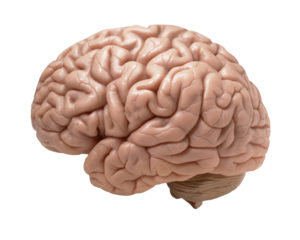More support for health benefits of a Mediterranean diet. Results of a study comparing brain health in groups of older people (in their 60s and 70s) suggest that a Mediterranean diet supplemented with olive oil or nuts may counter-act age-related cognitive decline (overall their cognitive test scores held steady). But the group assigned to the low-fat diet (the control group) worsened on cognitive tests. The Mediterranean diet emphasizes eating vegetables, fruits, legumes (beans), nuts, whole grains, seeds, olive oil, fish, moderate consumption of dairy products (mostly as cheese and yogurt), moderate wine consumption (optional), and low consumption of meat and meat products.From the Wall Street Journal:
Mediterranean Diet Boosts Brain Power, Clinical Study Finds
The Mediterranean diet, supplemented with a handful of nuts or a few tablespoons of olive oil a day, can counteract the effects of aging on the brain’s ability to function, a new clinical study suggests.
The study, published online Monday in JAMA Internal Medicine, was unusual in that it employed rigorous scientific practices to test the effect of the diet on health....Data gathered from previous observational studies suggested that adhering to a Mediterranean-type diet related to better cognitive function and a reduced risk of dementia, but observational studies have limitations, he said.
The Mediterranean diet, which has also shown benefits in cardiovascular health, emphasizes vegetables and fruits, unrefined grains and beans. It also includes fish and wine and minimal consumption of meat and full-fat dairy products.
The study involved 447 cognitively healthy participants, 55 to 80 years of age, who were divided into three groups. Two groups followed the Mediterranean diet and added either 30 grams of mixed nuts (walnuts, hazelnuts and almonds) a day, or five tablespoons of extra virgin olive oil a day. The third group, acting as a control, was advised to follow a low-fat diet. The subjects were followed for a median of just over four years.
The results showed that, compared with the control group, memory function remained stronger in the Mediterranean diet plus nuts group, while frontal (attention and executive function) and global cognition benefited in the Mediterranean diet plus olive oil group.
The diminished decline in cognitive function likely stems from the abundance of antioxidants and anti-inflammatory agents found in the supplemental foods, Dr. Ros said. Olive oil and nuts are rich in phenolic compounds that might counteract oxidative processes in the brain, leading to neurodegeneration, the study said. “If you can delay your age-related cognitive decline, you can process tasks with higher speed,” said Dr. Ros.
The research was a substudy of a larger investigation, designed by Dr. Ros, that found the Mediterranean diet, supplemented with additional olive oil or nuts, reduced the incidence of major cardiovascular events among people at high cardiovascular risk. That study, which involved nearly 7,500 participants and known by the acronym Predimed, was published in 2013.

 Another study finding negative effects of air pollution - this time high levels of traffic-related air pollution is linked to slower cognitive development among 7 to 10 year old children in Barcelona, Spain. From Science Daily:
Another study finding negative effects of air pollution - this time high levels of traffic-related air pollution is linked to slower cognitive development among 7 to 10 year old children in Barcelona, Spain. From Science Daily: Long-term air pollution can cause damage to the brain: covert brain infarcts ("silent strokes") and smaller brain volume (equal to one year of brain aging).
Long-term air pollution can cause damage to the brain: covert brain infarcts ("silent strokes") and smaller brain volume (equal to one year of brain aging). People are living longer these days, but the desire is to age with mental faculties intact. Thus it is great to find research that looks at how one can increase the odds of not having cognitive problems or dementia in old age.
People are living longer these days, but the desire is to age with mental faculties intact. Thus it is great to find research that looks at how one can increase the odds of not having cognitive problems or dementia in old age. The following study raises the question of how to lower BPA levels in all people, not just children with autism spectrum disorder.
The following study raises the question of how to lower BPA levels in all people, not just children with autism spectrum disorder.